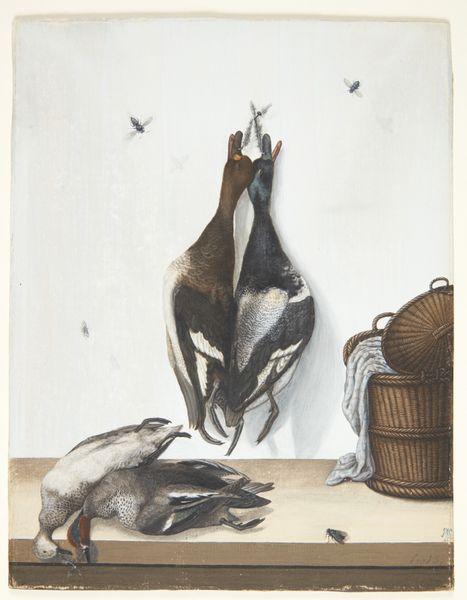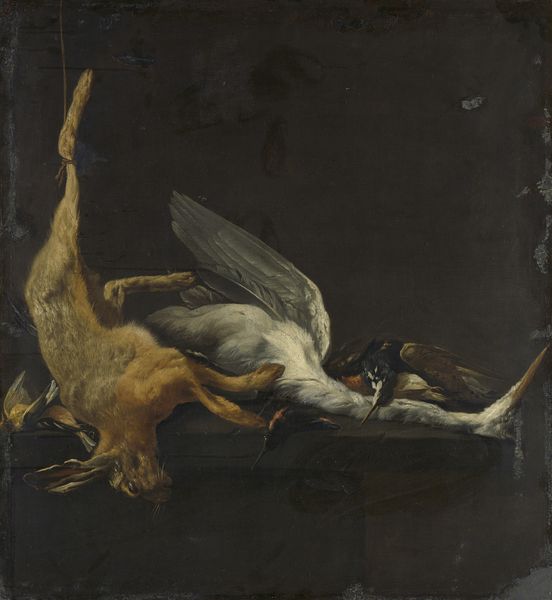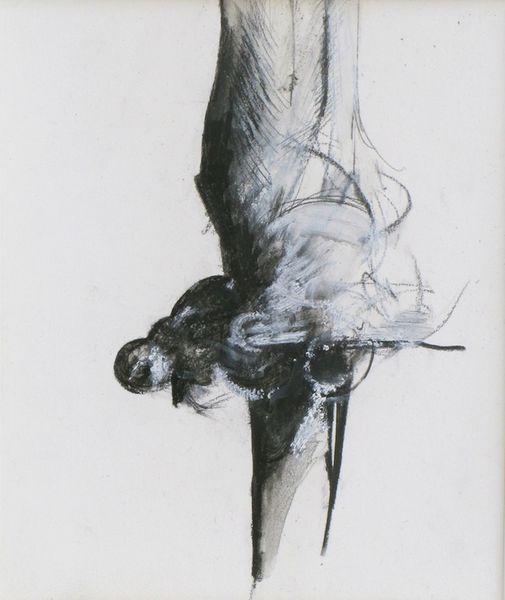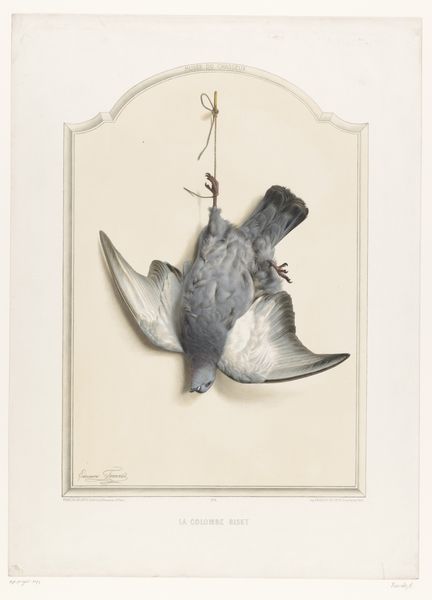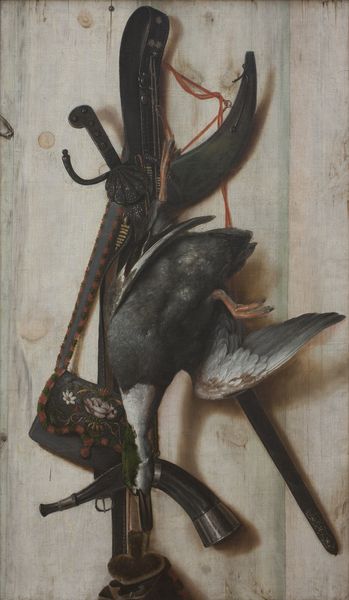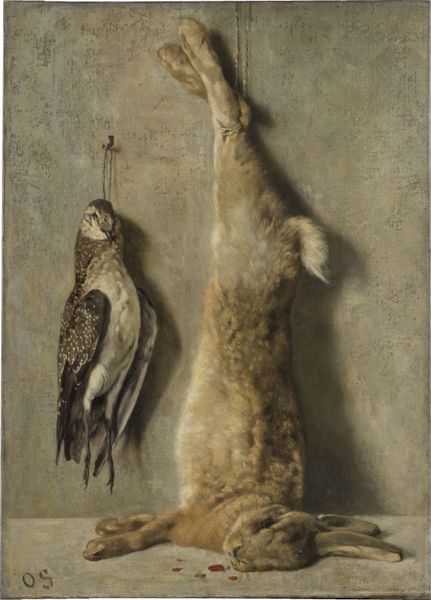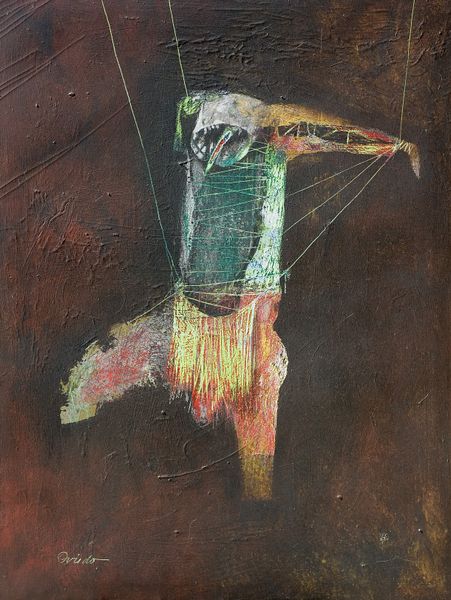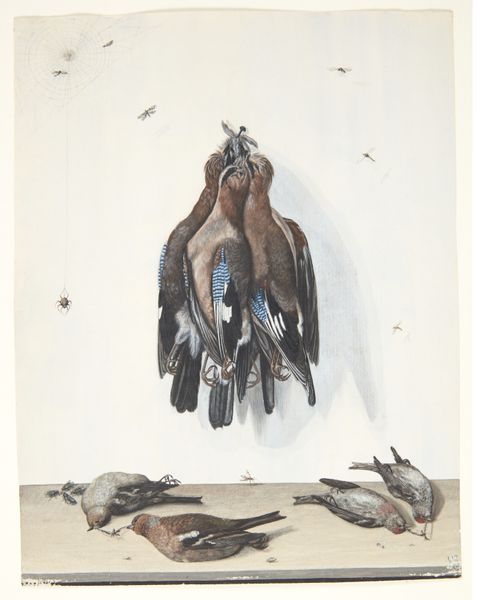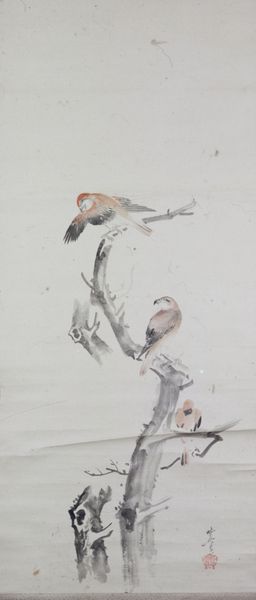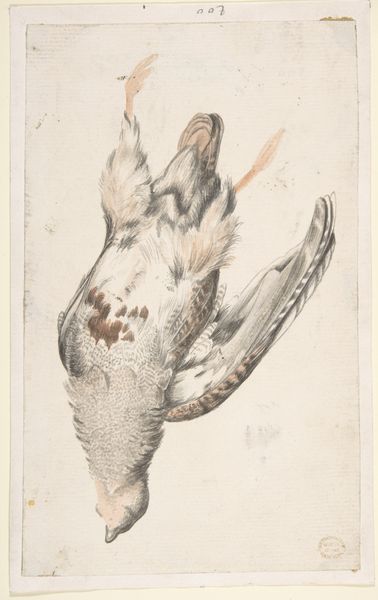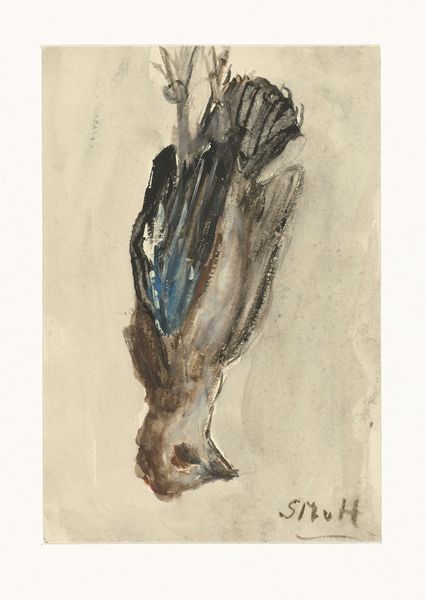
Dimensions: overall: 19.3 x 14.6 cm (7 5/8 x 5 3/4 in.)
Copyright: National Gallery of Art: CC0 1.0
Curator: Look at the stark image before us. This charcoal drawing from around 1760 is by Barbara Dietzsch and is titled "A Rose-Breasted Finch Hanging from a Nail." What's your immediate take? Editor: Stark is right. My immediate impression is melancholic; the lifeless form is rendered with an unsettling precision, emphasizing the bird's vulnerability. The muted palette really reinforces this feeling. Curator: Indeed, Dietzsch captures a certain pathos. It’s interesting to consider this piece within the broader context of 18th-century scientific illustration. Birds were a popular subject, often depicted with exacting detail for ornithological study. What sets Dietzsch apart is imbuing this specimen with emotion. The presentation, hanging by its feet, feels very staged. Editor: The composition itself is fascinating. The bird's diagonal placement against the neutral backdrop creates a dynamic tension, yet its limp posture implies complete surrender. It's as though Dietzsch is intentionally playing with form and emotion to elevate it from simple naturalism. What about the little fly there in the top left? I cannot ignore its addition! Curator: Good eye. The fly suggests vanitas themes that resonated strongly during this time. It adds a layer of moral contemplation regarding mortality and decay. Consider the cultural context – the burgeoning interest in natural history intertwining with philosophical reflections on the fleeting nature of existence. Dietzsch, in particular, coming from a family of artists specializing in natural history, navigated the art market by blending science with evocative imagery to appeal to wealthy patrons. Editor: Precisely, the stark contrast between the fragile beauty of the bird and the harsh reality of its death generates this emotional resonance. The formal elements work together, highlighting texture in the feathers while emphasizing the abrupt shift in perspective to a hanging pose. It isn't simply informative, but deliberately expressive. Curator: Absolutely, this image embodies the intersection of art, science, and the market. Editor: Looking closer I can also recognize the skill involved to use the highlights and shadow on the bird. The charcoal technique makes this romantic-era naturalism an artistic endeavor with complex emotion! Curator: It really allows us to examine these dualities with a fresh view of eighteenth century study of natural science. Editor: A hauntingly elegant commentary on the brevity of life and our relationship with the natural world.
Comments
No comments
Be the first to comment and join the conversation on the ultimate creative platform.
